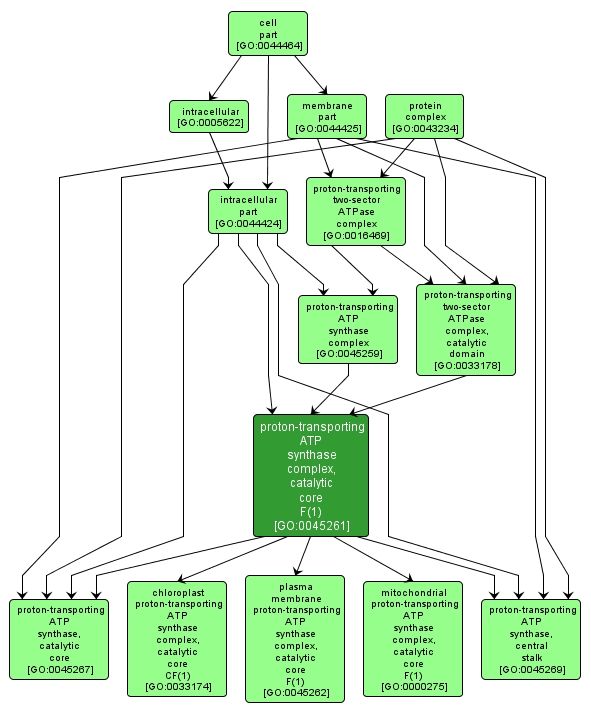GO TERM SUMMARY
|
| Name: |
proton-transporting ATP synthase complex, catalytic core F(1) |
| Acc: |
GO:0045261 |
| Aspect: |
Cellular Component |
| Desc: |
The sector of a hydrogen-transporting ATP synthase complex in which the catalytic activity resides; it comprises the catalytic core and central stalk, and is peripherally associated with a membrane, such as the plasma membrane or the mitochondrial inner membrane, when the entire ATP synthase is assembled. |
Synonyms:
- hydrogen-transporting ATP synthase, F1 sector
|
|

|
INTERACTIVE GO GRAPH
|














